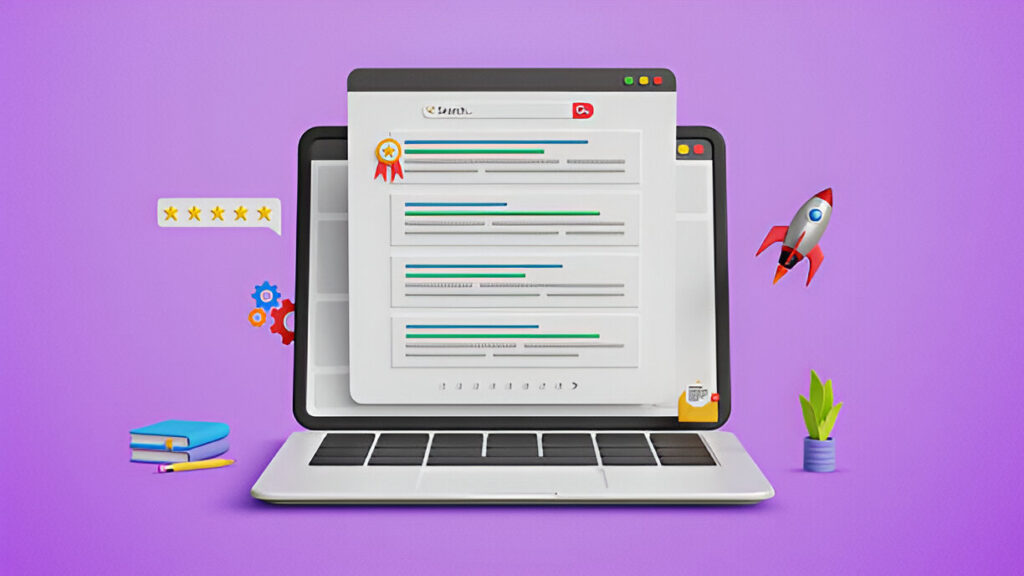Google Search is not what it used to be. With the rise of AI Overviews, Search Generative Experiences (SGE), and conversational search interfaces, many in the SEO world are wondering: Do backlinks still matter?
A recent industry survey confirms the answer is a clear yes.
While AI continues to reshape how users find answers, SEO professionals still heavily rely on backlinks as a key ranking signal. The digital landscape is evolving, but some SEO fundamentals remain strong—especially when it comes to building trust, authority, and relevance.
In this article, we’ll explore the real impact of AI on search, uncover what the data says about backlinks, and show you how to optimize your site for both AI-driven search and traditional SEO.
What the Latest SEO Survey Reveals About AI and Backlinks

A large-scale SEO survey conducted in early 2025 collected insights from over 1,200 SEO professionals. The findings were clear:
79% of SEOs still consider backlinks as a top 3 ranking factor
68% increased their investment in link building over the past 12 months
AI Overviews are gaining visibility, but organic link-based content still receives higher click-through rates
This shows that while AI-generated answers are changing how users interact with search results, backlinks continue to play a vital role in ranking, trust signals, and organic visibility.
“AI didn’t kill SEO — it made quality content and quality links more important.”
— Survey respondent, Senior SEO Strategist
AI Overviews: What They Are and How They Impact Search
What Are AI Overviews?
AI Overviews, previously known as SGE (Search Generative Experience), are AI-generated summaries displayed above traditional search results. They offer users instant answers, often eliminating the need to click through to a webpage.
These overviews pull information from multiple sources and attempt to summarize complex topics in a conversational tone.
How Do AI Overviews Affect SEO?
They introduce zero-click search behavior, reducing traditional organic CTR
Content used in AI Overviews often comes from authoritative, well-cited sources
Google still uses links, structure, and EEAT to determine what content is trustworthy
Interestingly, AI Overviews don’t always rank at position #1. A Reddit-based research study recently found that in over 12.4% of SERPs, AI Overviews rank below the top organic results.
This shows there’s still plenty of opportunity for traditional SEO to drive traffic—especially with the right backlink and content strategy.
Why Backlinks Still Matter in 2025

Despite the rise of AI and zero-click answers, backlinks remain a foundational part of Google’s ranking algorithm.
Here’s why backlinks are still powerful:
1. They Signal Trust and Authority
Backlinks from high-authority sites tell Google your content is worth referencing. This supports EEAT (Expertise, Experience, Authoritativeness, and Trustworthiness), which is crucial in AI-driven content selection.
2. AI Systems Still Need Credible Sources
AI Overviews are not original thinkers—they depend on existing data. If your site is well-linked and respected, it is more likely to be referenced in AI Overviews.
3. They Boost Visibility Beyond AI Summaries
Not all users rely on AI answers. Many still scroll down to explore full articles. A strong backlink profile ensures your content ranks in traditional listings.
EEAT and Backlinks: The Secret to Ranking in AI-First Search
EEAT is not just a buzzword. Google now relies more than ever on these four signals:
Experience: Does the author have firsthand experience with the topic?
Expertise: Is the information accurate and well-researched?
Authoritativeness: Is the site recognized in its industry?
Trustworthiness: Are there quality links pointing to the content?
High-quality backlinks are essential in fulfilling all four.
When your content is cited by news sites, universities, or niche authorities, Google sees you as a trusted voice, and your chances of being featured in AI Overviews and Featured Snippets increase dramatically.
How to Optimize Your Link Strategy for the AI Era
1. Focus on Quality Over Quantity
Avoid spammy or low-authority links. Instead, target editorial links, relevant guest posts, and brand mentions from sites with topical relevance.
2. Use a Nofollow Link Checker
Remove or disavow links from irrelevant or toxic sites using tools like:
- Ahrefs
- Semrush
- Moz
- Nofollow Link Checker plugins for Chrome
This helps you clean up your link profile and improve domain trust.
3. Analyze Competitor Backlinks
Use competitor research to uncover which sites are linking to top performers. Tools like Ahrefs or Semrush can help you identify these opportunities.
Focus on getting featured in:
- Expert roundups
- Niche directories
- Industry blogs
- Case studies or tool comparisons
4. Leverage Link-Worthy Content
Create assets that earn links naturally, such as:
- Original surveys
- Data visualizations
- How-to guides
- Infographics
- Case studies
- Video explainers
Content that educates, entertains, or solves problems will always attract backlinks, even in an AI-dominated search environment.
How to Structure Your Content for AI, GEO, and Traditional SEO

Use Semantic SEO Principles
Cover topics in-depth, not just keywords
Use related entities and questions (People Also Ask)
Answer multiple angles of a query
Optimize for search intent (informational, commercial, navigational)
Optimize Headings for Google Crawlers and AI
Use clear, keyword-rich headings (H2s and H3s)
Group content logically
Add internal links to other relevant pages on your site
Include external links to authoritative sources (Google prefers this)
Add Structured Data (Schema Markup)
Structured data helps Google understand your content better. Use:
Article Schema
FAQ Schema
Author Schema
Organization Schema
Review or Product Schema if relevant
Tools to Monitor Backlinks and AI Impact
Here’s a quick list of essential tools:
| Tool Name | Purpose |
|---|---|
| Google Search Console | Monitor indexing, crawl issues, and link reports |
| Ahrefs | Track backlinks, competitors, and anchor texts |
| Semrush | Backlink audit, toxicity score, and outreach |
| Moz | Page authority, spam score, and link research |
| Screaming Frog | On-page SEO and link health |
| AnswerThePublic | Identify related search questions (Featured Snippets) |
Regular tracking ensures your strategy aligns with changing SERPs and AI overview behaviors.
Key Takeaways: What SEOs Should Focus On in 2025
- AI search is here, but it doesn’t replace the fundamentals
- Backlinks still influence trust, visibility, and AI content selection
- Content quality + EEAT + link equity = long-term SEO success
- Blend AI optimization with classic SEO tactics for maximum visibility
- Stay up to date with Google’s evolving updates, especially AIO and helpful content system
Actionable Checklist: Win in AI and SEO Together
- Run a backlink audit
- Clean up nofollow/toxic links
- Create high-value, linkable content
- Optimize headings and internal linking
- Add schema markup
- Target Featured Snippets with concise summaries
- Focus on EEAT: Show your expertise and credibility
- Monitor AI Overview rankings and CTR
Final Thoughts: AI May Change Search, But SEO Principles Still Work
AI has changed the face of Google Search—but it hasn’t replaced SEO. Instead, it has reinforced what’s always mattered:
- Helpful, expert-driven content
- Authoritative backlinks from trusted sources
- Clear, structured formatting for AI and search crawlers
As we move forward in this AI-first era, the best SEOs will be those who embrace change, adapt strategies, and combine modern tools with timeless SEO fundamentals.
Stay agile. Stay visible. And remember—links still matter.
Frequently Asked Questions (FAQ)
Yes. Google’s latest updates still use backlinks as trust and authority signals, especially for AI-driven results.
Featured Snippets are single-source answers; AI Overviews pull summaries from multiple trusted sources.
Focus on EEAT, build authority links, and format content clearly using structured data and user intent optimization.
Yes. Focus more on editorial backlinks, niche relevance, and brand trust. Avoid spammy tactics.
Use tools like Ahrefs, Semrush, or Moz to see where your competitors are earning links.